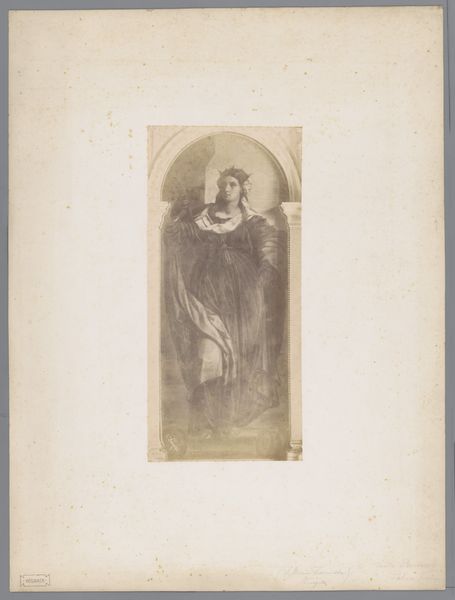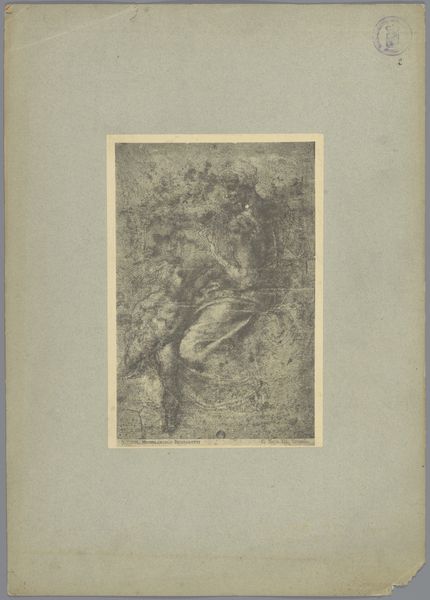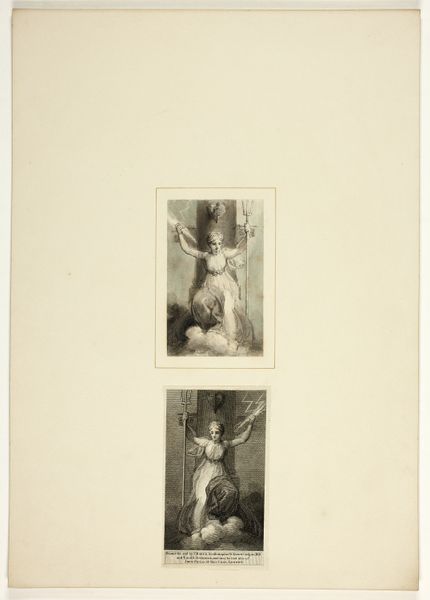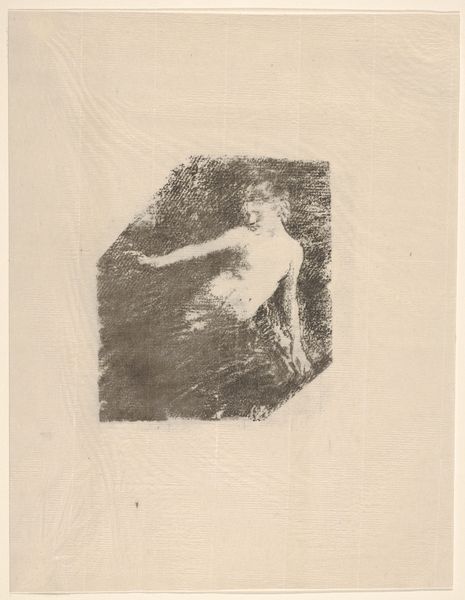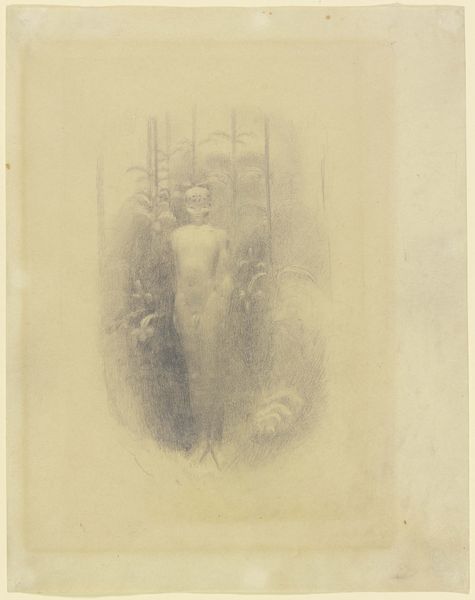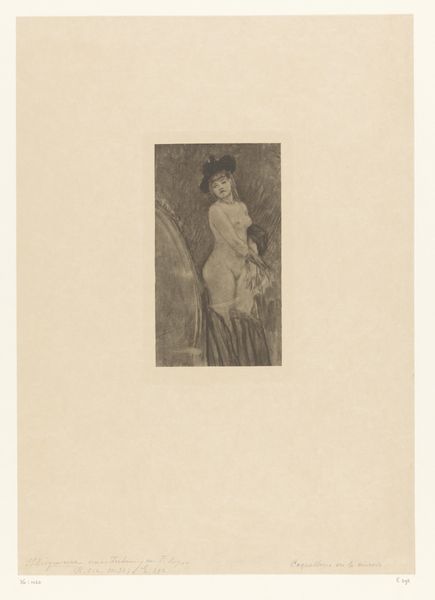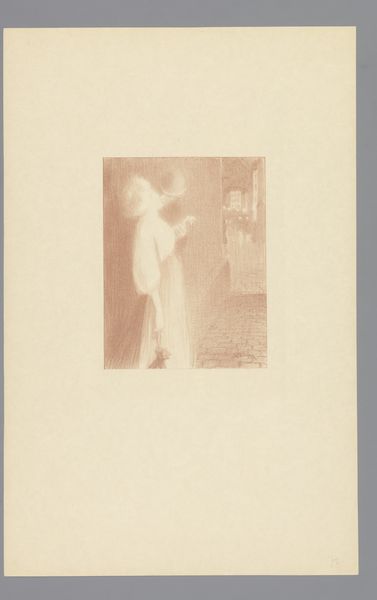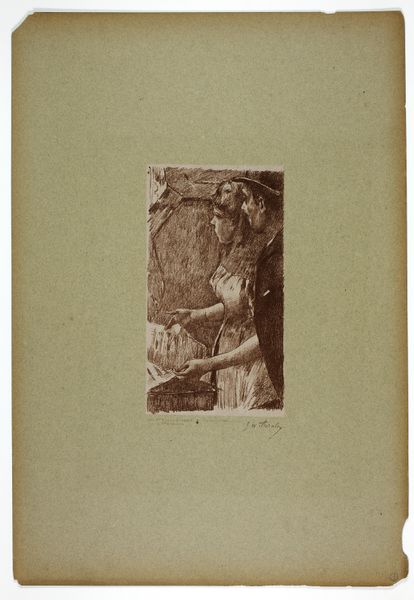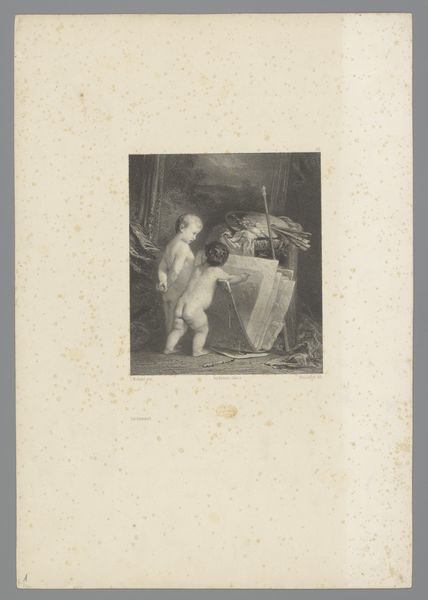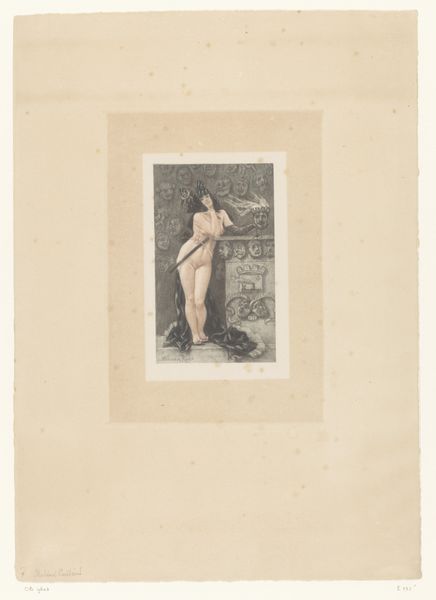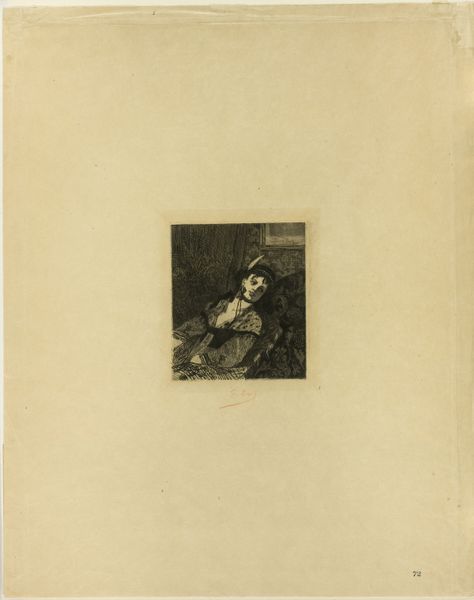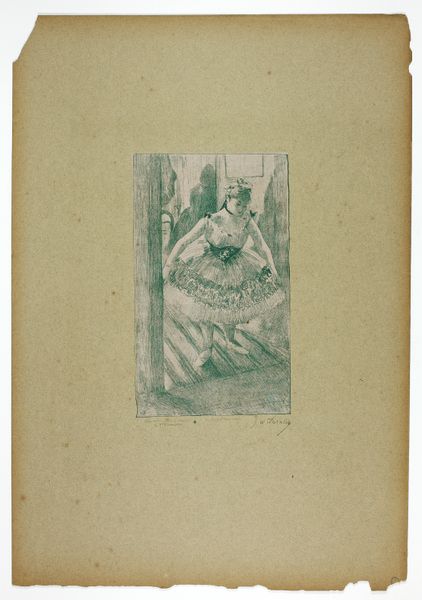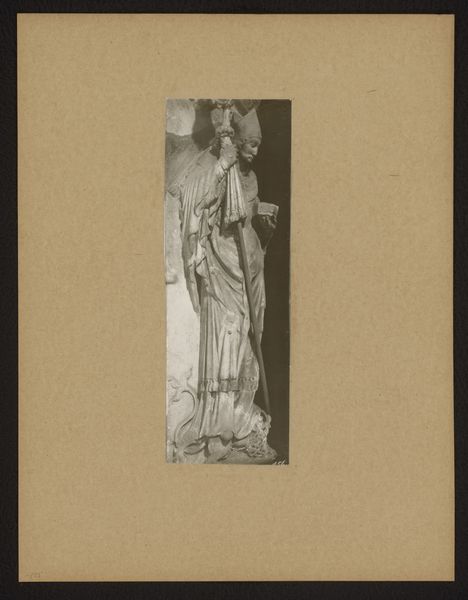
Dimensions: height 227 mm, width 142 mm
Copyright: Rijks Museum: Open Domain
Curator: This photograph shows a painting discovered at Noordeinde 140 in The Hague. It dates roughly from 1910 to 1915, though its artist remains anonymous, catalogued under Monumentenzorg, which focuses on cultural heritage. Editor: It's dreamy, almost faded. A goddess descends, maybe? The lighting makes her ethereal, and there’s definitely some kind of putto situation happening down below. I love the vague sense of depth despite the monochrome. Curator: The composition echoes classical motifs—a central, idealized female figure, possibly a depiction of Flora or Venus given the flowers. The cupid below emphasizes themes of love, beauty and perhaps fertility. We must consider that Noordeinde at that time housed an aristocratic population steeped in classical education. Editor: It hits me like those old postcards with sepia tones, something romantic yet distant. Like a lost memory. The photograph itself feels like a preservation effort of something already disappearing. Was the painting considered important at the time? Curator: Given Monumentenzorg's involvement, we can assume the painting was seen as having historical or artistic merit worthy of record, particularly if the building itself was historically significant. Preservation tells us volumes about how value is assigned and what narratives people inscribe upon their worlds. Editor: And I bet those narratives changed after the photo was taken. World War I, Dada…Suddenly something flowery and goddess-y like this might have looked ridiculous, you know? Maybe the people who took the photo suspected things were about to change drastically, that there may no longer be the same audience or the context necessary to read the painting with appreciation? Curator: Exactly. The social function of the image shifts, taking on new significance within a modern frame. Understanding the archival impulse is fundamental in art history. The politics of historical documentation and preservation reflects its own particular socio-cultural forces. Editor: Okay, so less a painting and more of a time capsule—layers of meaning accruing, both beautiful and eerie. It certainly makes you ponder how much we project ourselves onto images from the past. Curator: Precisely. Each encounter reshapes the artwork within the continuum of cultural interpretation. Editor: Right, and that’s the really compelling part about digging into it!
Comments
No comments
Be the first to comment and join the conversation on the ultimate creative platform.
